Perhaps the most important gift you can impart to your children is a love of travel and the world. While there are many types of activities that are sure to accomplish this, a surefire way to get the little ones excited and provide good times for the whole family is by exploring the diverse wildlife and animal rescue projects in Southeast Asia.
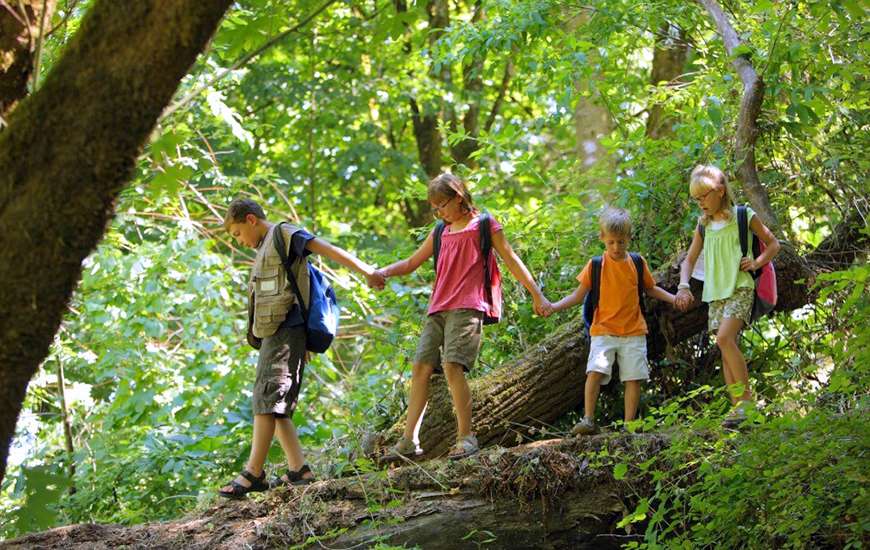
A jungle-trek is sure to excite the little ones!
As tourism has boomed in the region, it has often come at the expense of animals and their welfare. Many organizations working with animals for tourism purposes are absolute horror-shows of animal cruelty and abuse. Besides the obvious moral implications, this is especially important to avoid on family trips, as scenes of suffering animals are sure to upset children and parents alike. However, there are still plenty of organizations you can visit where the primary focus is the rescue and rehabilitation of the animals, rather than just serving as entertainment for tourists. You can rest assured that any organizations or destinations mentioned in this article operates ethically and the animals there are well treated.
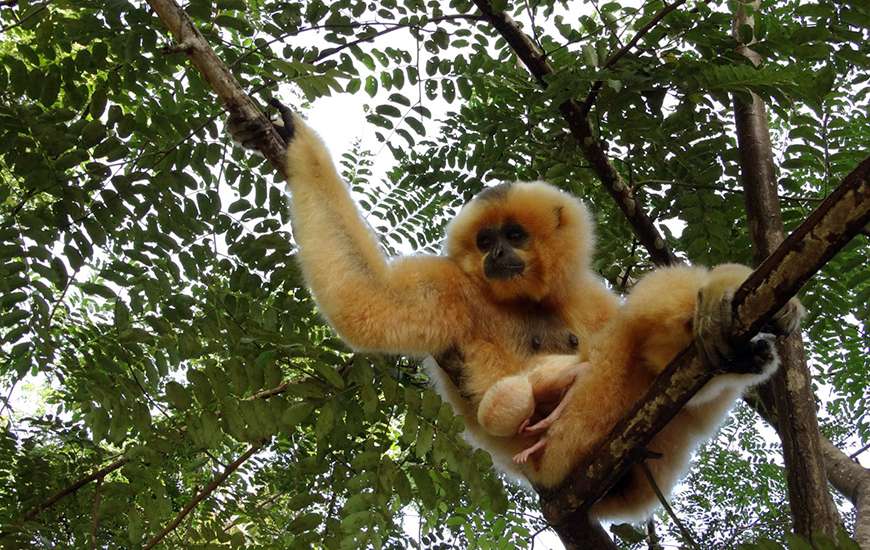
The monkeys of Nam Cat Tien are worth a visit for any animal-lover.
Nam Cat Tien National Park, located roughly halfway between Ho Chi Minh City and Da Lat, is a highlight for any animal lover visiting Vietnam. Here the top activities include an exciting night safari, with the guide using a torch to illuminate various wildlife including boars, deer, fishing cats, monkeys and birds. There is also a fantastic non-profit operating out of the depths of the park, called Dao Tien Endangered Primate Species Centre, which works to ensure the survival of various endangered primates in the park.
Meanwhile diving at Nha Trang or Con Dao, where at the latter you can also witness the release of baby turtles into the sea, are great options for family trips as they are easily combined with time at the beach or in a resort. Bear in mind that hatching season for the turtles takes place from April to September.
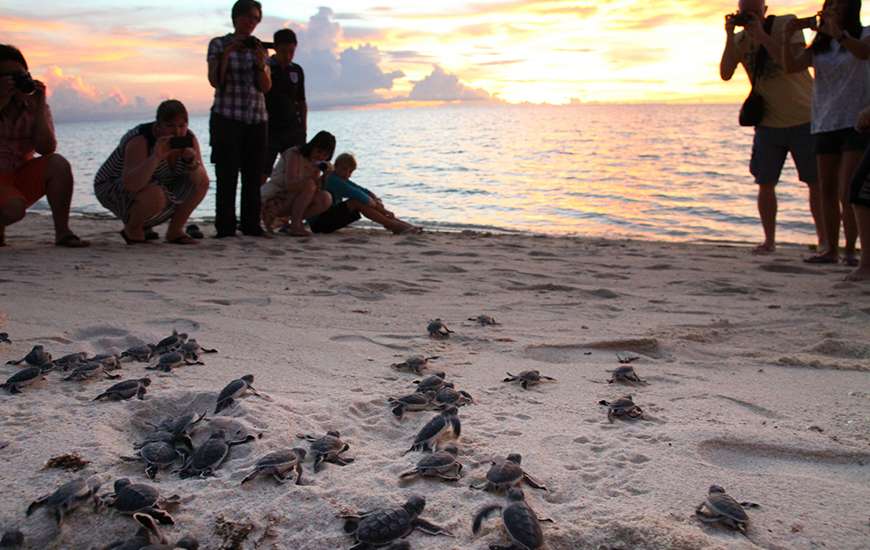
Release baby turtles during the April-September hatching-season.
The mighty and majestic elephant is of course Southeast Asia’s most iconic animal, having formed an integral part of the region’s way of life for millennia. Sadly, many elephant camps treat the animals terribly, forcing them to carry tourists on their spines (which is very harmful) for hours every day. Luckily, there has been a gradual shift of focus to preservation and rehabilitation in many places.
There are few elephants left in Vietnam, but there are some great organizations in Laos, Cambodia and Thailand. The ones that come most highly recommended, both as experiences and for their ethical practices, are Sayaboury Elephant Conservation Centre in Laos, Mondulkiri Elephant and Wildlife Sanctuary in Cambodia, and Chiang Mai Elephant Nature Park and Conserve Natural Forests Pai in Northern Thailand. The activities at all of these organizations are fairly similar, including watching the elephants in their natural habitat, walking with them, feeding them and washing them. All accommodate visitors and volunteers for day-trips or extended stays.
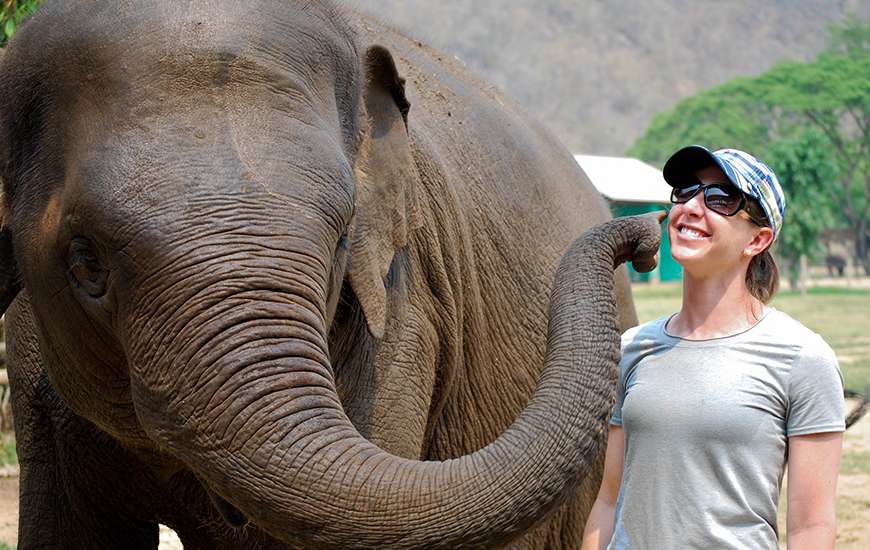
Elephants are wonderfully gentle and curious creatures when treated well.
Visitors to Luang Prabang and Northern Laos are sure to find themselves spending a day at Kuangsi Falls, one of the most visually spectacular waterfalls in all of Southeast Asia. There is an extra bonus here for wildlife enthusiasts however, as a Bear Sanctuary operates here, working to preserve the endangered Asiatic Black Bear. Walking around the forested enclosures watching the adorable bears play and rest is a great time, and almost overshadows the falls themselves.
Going dolphin watching in either The Four Thousand Islands, Laos or near Kratie, Cambodia, has long been a staple among animal lovers visiting the region, and it’s a great way to mix in some water activities like kayaking or tubing, both great options for family travellers. While the native Irrawaddy dolphins are part of the same population, they are becoming a rarer and rarer sight in Laos, so your guests will probably have a better chance of spotting some down near Kratie, in Cambodia.
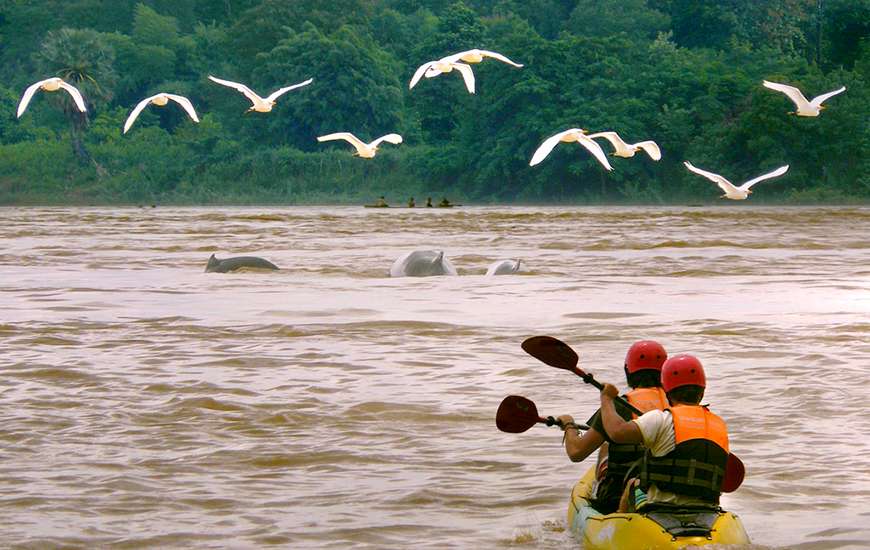
See one of the rare Irrawaddy dolphins in either Cambodia or Laos.
While cultural experiences might be a hard sell to kids, often perceived as “boring”, the wildlife around Angkor Wat is sure to add some extra excitement for families. Monkeys are everywhere around the forested ruins, and beautiful birds perch among the treetops.
In Thailand, the central and southern regions have the greatest density of animal-related activities. In the capital of Bangkok there is an incredible Aquarium called Siam Ocean World, and for braver groups, a visit to Bangkok Snake Farm is a fascinating time. If you’re putting together an eco-tour and are looking for some way for your guests to give back during their stay in Thailand, you can arrange some time to help out man’s best friend at Rescue Paws in Hua Hin, or for something more exotic, help care for rescued gibbons at the Gibbon Rehabilitation Project, northeast of Phuket.
Travel is a great way to experience wildlife, and a great way to instil a lasting respect for and interest in animals in children. With an increasing number of ethically responsible organizations, it’s easier than ever to put together a great family eco-tour discovering all the animals that Southeast Asia has to offer.